
About Wood Boring Beetle
There are literally hundreds of wood boring beetle species that infest live trees, but only a few that commonly create problems in log homes. Occasionally a beetle larva that was in a tree when it was harvested will later emerge as an adult out of a log in a home but since these beetles can't reinfest dead wood, these types of infestations end within a few years. It's the beetles that specialize in consuming seasoned wood that present problems in log homes.
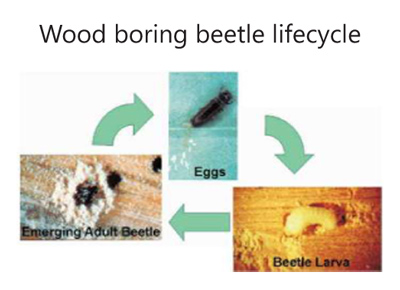
The life cycles of most wood boring beetles are similar. It starts with an adult female depositing her eggs in the wood. The eggs hatch and a small grub-like larva emerges. It's the beetle larvae that feed on wood, and they may continue eating the wood for several months or, in some cases, up to 20 years depending on the species. These beetles go through a transition just like a caterpillar changes into a moth or butterfly. There comes a time in its life cycle when it's getting ready to make the change that the larva makes a hole to the outside of the log, so it can get out of the wood as an adult beetle. That's why the holes are called “emergence holes.” Typically this is the first sign that beetles are present in the wood. Once the hole is complete and the tunnel is cleared of the sawdust or frass, the larva creates a pupa case and makes the transition to an adult beetle. The adult beetle eventually emerges from the hole, feeds on pollen and nectar and looks for a mate. Once impregnated, the female beetle can start the cycle all over again.
Borate treatments are quite effective in preventing and eliminating wood boring beetles by making the wood toxic to beetle eggs and young larvae. However, once larvae start making their emergence holes they no longer consume wood and will probably complete their life cycle. That's why signs of beetle activity may continue for several months after a borate treatment. But since the borate kills the eggs and younger larvae, eventually the infestation will end and the wood will be protected from future infestations.
There are two types of beetles that commonly infest log homes, powderpost beetles and old house borers. We'll address each individually.
POWDERPOST BEETLES
Although we've characterized them as powderpost beetles, there are actually two beetle species that are commonly referred to as powderpost beetles, lyctic beetles and anobiid beetles. Both species make small round emergence holes and have similar life cycles. Lyctid beetles are true powderpost beetles but they only infest hardwood species like oak, poplar, maple, walnut, etc. We occasionally run into a log home made from hardwood trees, but it's not very frequent. However, lyctid beetle infestations in oak flooring and hardwood cabinets and trim are quite common.
Although anobiid beetles are not true powderpost beetles, that's what they are commonly called. They infest both hardwoods and softwood species like spruce, pine, cedar and fir. They are also one of the few beetles that infest really old wood. Anobiid beetles are very small insects, the larva is a tiny white grub and the adult looks like a dark miniature ladybug. Typically you'll find their small, round emergence holes grouped in a one or two foot area on a single log. Their galleries rarely extend more than an inch or so deep into the wood, one reason they are so easy to control with a borate treatment. Anobiid beetles prefer damp wood, which is why you usually find them on exterior surfaces that have not been stained or maintained for several years. On rare occasions they can emerge from interior surfaces in newer homes. But in most of these cases the infestation started before or during the construction process. Anobiid beetles typically complete their life cycle in two to three years.
Old House Borers
Old house borers are large insects with a life cycle that can extend to 12 or more years. The old house borer attacks only softwoods and the initial infestation typically occurs while the logs are being stored or during transit. Although called the old house borer, the first emergence of these beetles in a home usually appears within five to seven years after construction. The larva is a large white grub an inch or so in length. The adult beetle is brownish black with two long, thin antennae which is why they are also called “longhorn” beetles. Since old house borers infestations are usually scattered around the home they are considered more of a nuisance pest than a structurally damaging insect.
The earliest indication of an old house borer infestation is usually the chewing noise made by older larvae in the wood. This can be very disconcerting, especially in the middle of the night when the larvae are most active. The appearance of oval emergence holes is the next step in the process. The frass consists of fine powder and small tightly packed pellets. The adult eventually emerges from the hole and the process can start all over again. Old house borers burrow quite deep into the wood and it is not unusual for an infestation to start on the outside surface with emergence occurring on the inside wall.
Treating a home for old house borers takes some patience. The only quick remedy is a structural fumigation. However the cost of fumigation and the inconvenience of leaving your home for a few days is more than most people are willing to tolerate. Borate treatments work, but they take time, sometimes lots of time before total control is achieved. It is not uncommon for old house borer activity to continue for up to two years after a borate treatment.
Additional borate treatments will not speed the control process. Since older beetle larvae are large insects and at that stage of their lives eat little wood, their tolerance to borates is quite high. They will probably complete their life cycle and emerge as adult beetles. The presence of borate in the wood does two things; first it kills younger beetle larvae that are feeding in the wood, and second it prevents any old house borer eggs from hatching. The borate treatment interrupts the beetle's life cycle and eventually the infestation will end.

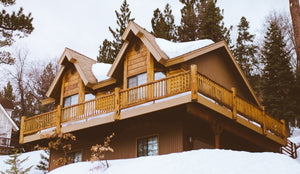

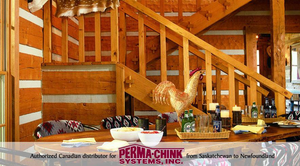

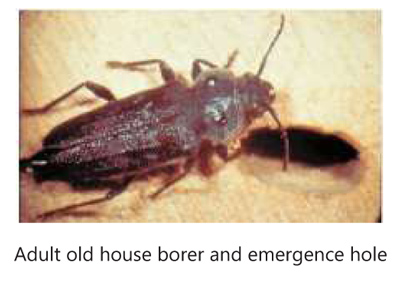
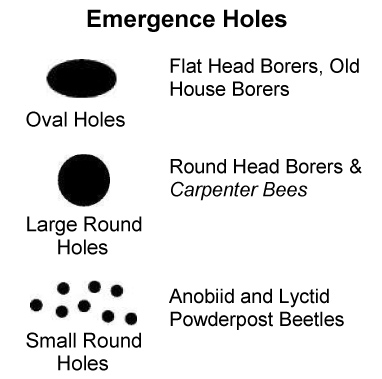
Leave a comment